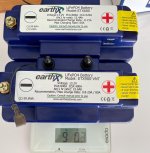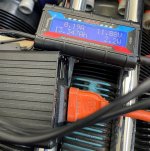Yep, good summary about the battery, but not about the aircraft as a system.
I agree the BMS will protect the battery from overvoltage. This, not venting, is my main reservation about using an EarthEx. I have had a voltage regulator fail high, driving up output voltage. The standalone overvoltage protection circuit should have tripped the alternator output solenoid at 16 volts - it did not. Voltage got north of 17 volts before I woke up to the alarm and manually tripped the output solenoid. That airplane had two PC-625 batteries in parallel, and they did what was expected - just took the extra current providing a cap on the voltage excursion (I can't guess how high the voltage would have gotten without the batteries online). If I let this continue the batteries would have eventually boiled off, but they hung in there for several minutes as I figured out what was going on (that took a lot longer than I thought it would),
Now consider the BMS under the same conditions. The BMS would have automatically isolated the battery from the aircraft power system, saving itself. All well and good until you look at the ~$30K of avionics now taking the voltage excursion with nothing to cap it.
Here is the rub about a BMS - save a few hundred dollars of batteries or save the avionics. I would also think that for ship power dependent engines this would require additional design consideration.
I've only had one such alternator voltage excursion, but it left me very wary. If I ever do use an Earthex I'll test the overvoltage circuit on a regular basis by connecting it to a variable voltage power supply and measuring at what voltage it trips to verify it is lower than the BMS overvoltage trip point.
Carl






